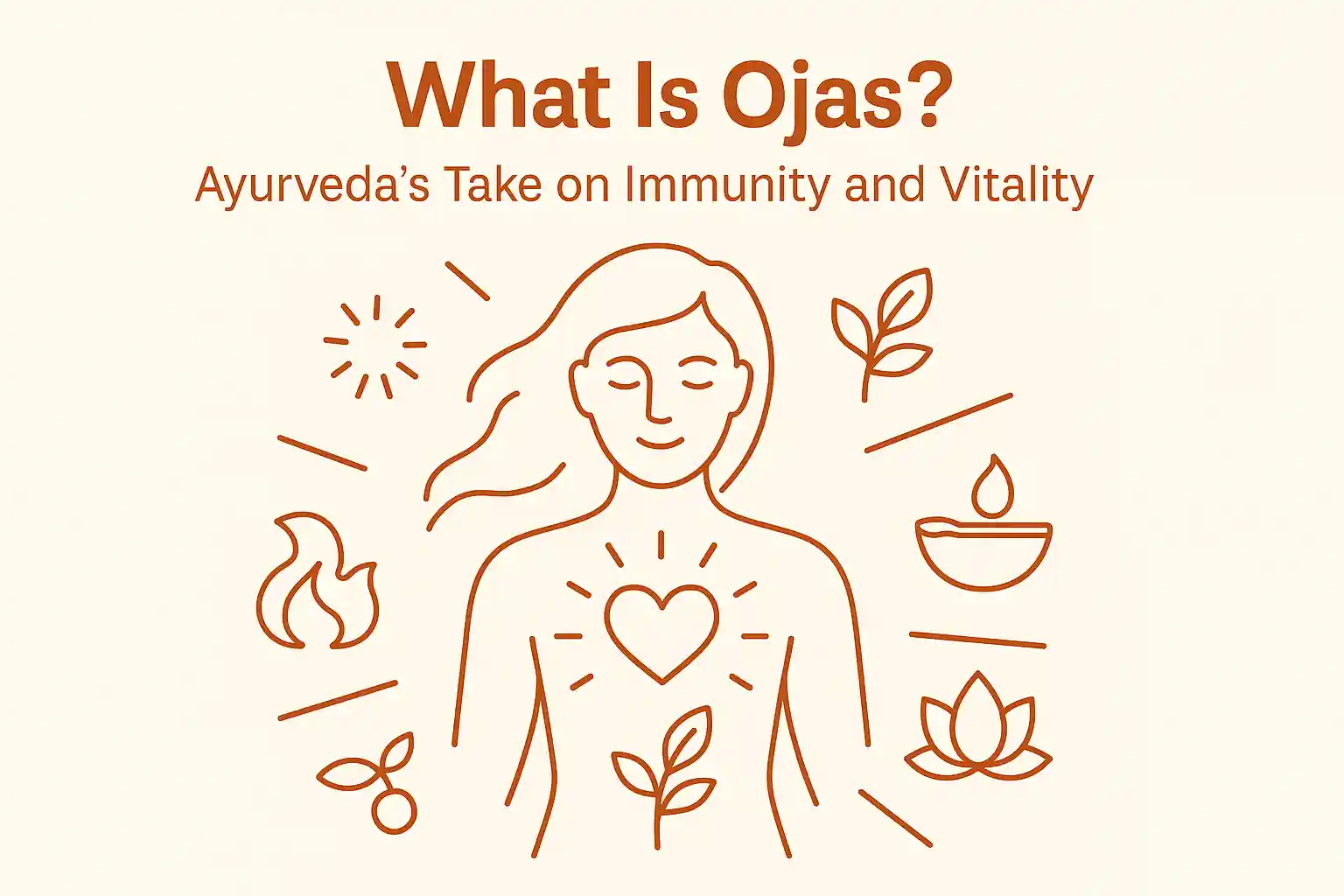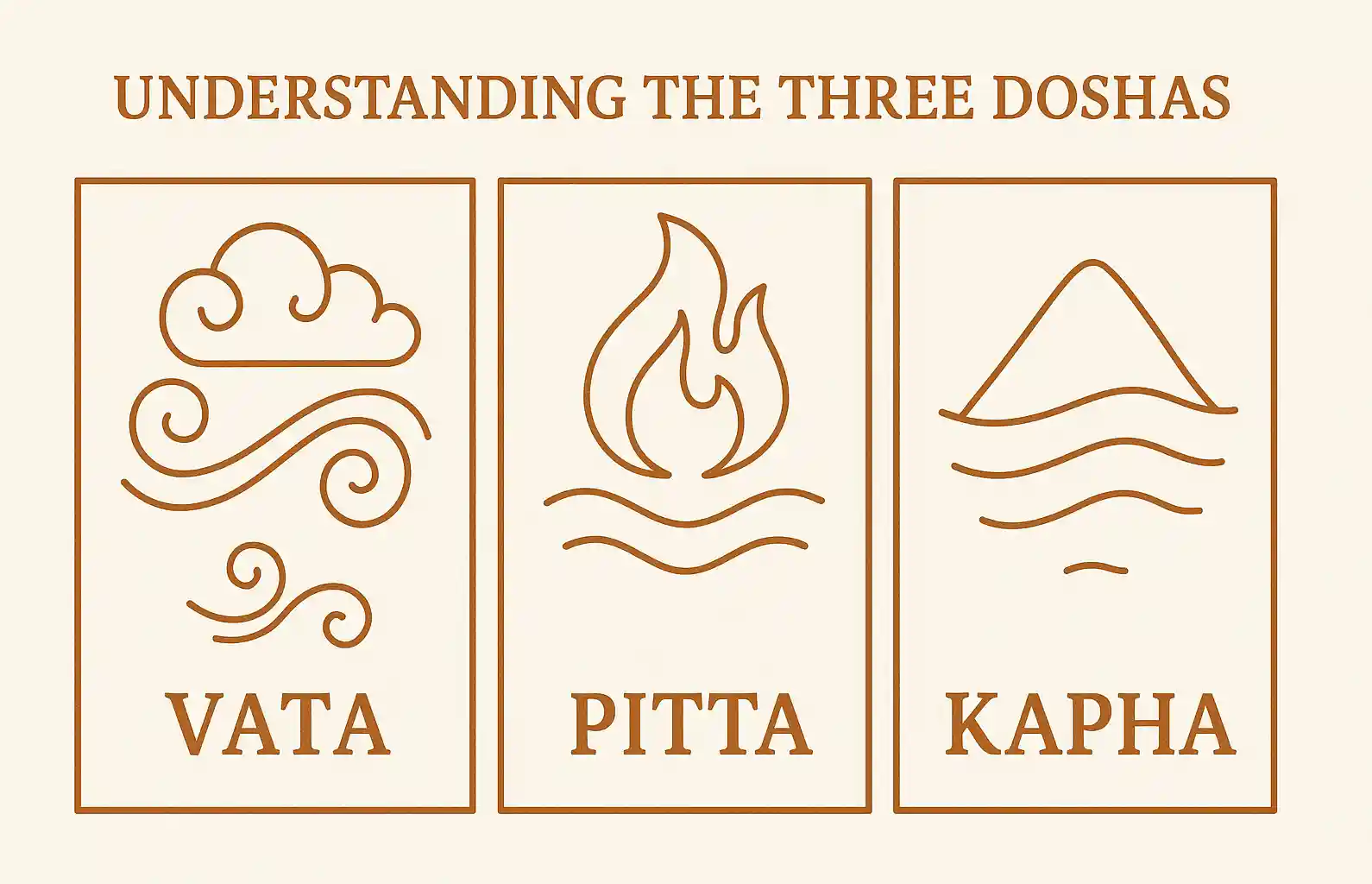
Ojas represents the essence of life, governing immunity, vitality, and overall well-being in Ayurveda
In Ayurveda, Ojas is considered the essence of life—a subtle substance that governs immunity, vitality, and overall well-being. It is the final product of perfect digestion, metabolism, and tissue nourishment. While modern wellness talks about immunity, energy, and resilience, Ayurveda connects them all through the concept of Ojas.
In this guide, we'll explore what Ojas means in Ayurvedic terms, how it's formed, signs of strong vs. depleted Ojas, and how to build and protect this vital essence.
Understanding Ojas: The Essence of Life
Ojas (pronounced oh-jus) comes from the Sanskrit root "vigor." According to Ayurveda, it is the superfine essence of all bodily tissues (Dhatus) and the ultimate result of healthy digestion and balanced Agni (digestive fire).
It is closely linked to:
- Immunity (Vyadhikshamatva)
- Vitality and strength
- Mental clarity and emotional stability
- Reproductive health
The classical texts describe Ojas as:
"That which keeps all the Dhatus united, maintains vitality and sustains life."
In essence, Ojas is what makes you feel vibrant, radiant, and alive. It is considered the most refined essence of Shukra Dhatu, the reproductive tissue, linking Ojas directly to fertility and regeneration.
How Is Ojas Formed?
Ojas is formed through a long chain of transformation:
- Proper digestion by Agni of food
- Nourishment of the seven Dhatus (tissues: Rasa, Rakta, Mamsa, Meda, Asthi, Majja, Shukra)
- Subtle essence (Sara) of Shukra Dhatu becomes Ojas
This process takes time and requires optimal function at every level. If Agni is weak or if Ama (toxins) are present, Ojas will be depleted. Additionally, proper elimination of waste (Mala) is essential for healthy Ojas production.
Types of Ojas
Ayurveda recognizes two types:
1. Para Ojas
- • Fixed quantity (8 drops, according to classical texts)
- • Located in the heart
- • Responsible for sustaining life
- • Loss leads to death
2. Apara Ojas
- • Circulating throughout the body
- • Variable in quantity
- • Supports day-to-day energy and immunity
- • Can be built and protected
A healthy person maintains both types in balance.
Signs of Strong vs. Depleted Ojas
Here's how to tell if you have strong or low Ojas:
| Strong Ojas | Low or Depleted Ojas |
|---|---|
| Radiant skin and eyes | Dull skin, weak nails or hair |
| High immunity, rarely gets sick | Frequent colds and infections |
| Emotional resilience | Anxiety, irritability, burnout |
| Deep, restful sleep | Insomnia or disturbed sleep |
| Steady energy and enthusiasm | Fatigue, lack of vitality |
| Sharp mind and positive mood | Brain fog, poor memory |
| Joyful, connected state | Disconnection, overwhelm |
These indicators help you assess your current Ojas level.
Causes of Ojas Depletion
Several factors can weaken your vital essence:
- Poor digestion (weak Agni, presence of Ama)
- Chronic stress or anxiety
- Excessive sexual activity or physical exertion
- Sleeplessness
- Overconsumption of stimulants, alcohol, or processed food
- Excessive fasting or harsh detoxing
These factors disrupt the subtle process of Ojas formation and weaken your resilience. They are key risks in Ayurvedic rejuvenation for burnout protocols.
How to Build and Protect Ojas
The Ayurvedic approach to immunity and vitality is not quick-fix. It focuses on deep nourishment, routine, and mental calm.
1. Eat Ojas-Building Foods
- Warm, nourishing meals like kitchari, soups, stews
- Ghee (especially medicated), almonds, soaked dates, saffron, milk
- Sweet, juicy fruits (e.g., ripe mangoes, figs)
- Choose Ojas foods by Dosha: Vata (warm and oily), Pitta (cooling and sweet), Kapha (light and warm)
2. Strengthen Agni
- Follow Dosha-aligned meals and daily rhythms
- Include gentle digestive spices (cumin, cardamom, ginger)
3. Use Rasayana Herbs (Ayurvedic immunity boosters)
- Ashwagandha: Rejuvenates and reduces stress
- Shatavari: Supports hormonal and reproductive health
- Amalaki: Builds immunity and supports detox
4. Follow a Gentle Daily Routine (Dinacharya)
- Wake and sleep at consistent times
- Oil massage (Abhyanga) with warm sesame or Brahmi oil
- Spend time in nature and reduce sensory overload
5. Manage Stress and Emotions
- Practice meditation, yoga, and breathwork
- Create emotional boundaries and reduce overexposure to screens, noise, and stimulation
Ojas and the Doshas
Each Dosha affects Ojas differently:
- Vata: Depletes Ojas quickly through overstimulation, worry, and irregularity
- Pitta: Burns Ojas through excess intensity or inflammation
- Kapha: Has natural reserves of Ojas but may accumulate Ama if digestion is sluggish
Supporting Ojas requires maintaining Dosha balance and seasonal awareness.
Connection Between Ojas and Prana/Tejas
Ojas works in synergy with:
- Prana (life force, breath, vitality)
- Tejas (metabolic fire, cellular intelligence)
Together, these three form the subtle essence of the Tridoshas. Prana governs movement, Tejas governs transformation, and Ojas governs stability. Maintaining balance among the three is key to resilience and long-term health.
Ojas in Modern Terms
While Ojas can't be measured by labs, it aligns with:
- Immune function (white blood cell resilience, inflammation markers)
- Hormonal balance (adrenal and reproductive health)
- Nervous system tone (calm parasympathetic state)
It's your inner reserve of life-force—built slowly, depleted quickly.
Final Thoughts
Ojas is your buffer against stress, sickness, and burnout. It is not created by supplements alone, but by a life of rhythm, nourishment, and conscious calm. Ayurveda teaches us that health is not just the absence of disease, but the presence of Ojas.
Build it daily, protect it wisely.
Frequently Asked Questions
Common questions about understanding and building Ojas
Continue Your Ayurvedic Learning Journey
Related Articles

Understanding the Three Doshas: Your Guide to Ayurvedic Constitution
Discover the three vital energies that govern your body and mind. Learn how understanding your unique dosha constitution can transform your approach to food, lifestyle, and daily wellness.
6 min read
Understanding Vata Dosha: The Energy of Movement and Change
Discover the dynamic energy of Vata dosha - the force of movement, creativity, and transformation. Learn to recognize Vata characteristics, identify imbalances, and master the art of grounding this powerful yet delicate constitutional type.
12 min read